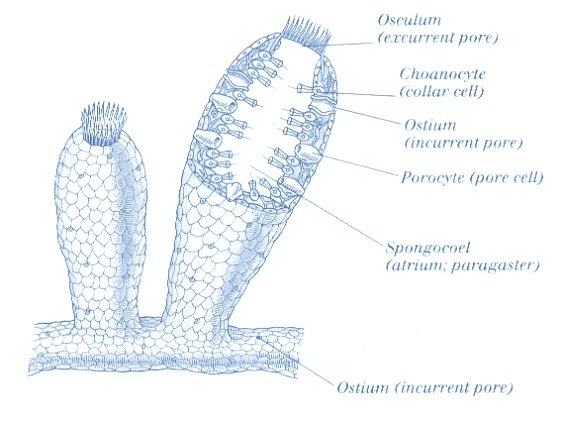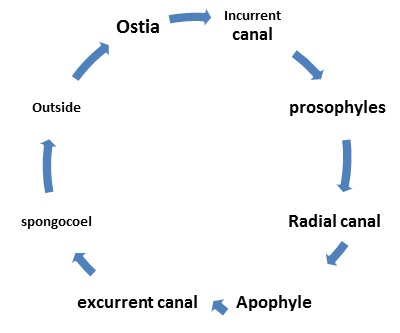Structural organization in sycon Assignment Help
Sycon is a sedentary sponge that is kept under the phylum porifera of className calceria. Hence, the sycon classification can be done in the following way that includes its phylum, className, order and group.
If you are looking for the best assignment service in completion of your work, you are at right place. Assignmenthelp.net provides Assignment Help on structural organization in sycon to the students so that they can complete their assignment on time without lots of efforts and hard work. You can even find the sample paper on structural organization in sycon from the experts of this Assignment Help site. So, stay in contact and get the desired information before the set time limit.
Sycon sponge classification
- Kingdom: Animalia
- Phylum: porifera
- className: calcarea
- Order: heterocoel
The above classification is made in order of the structure and behavior of the sycon. Sycon are marine invertebrates that are generally found attached to some hard substances like that of rock or wood. They have an inactive life and can be seen either solitary or in group which is termed as colonial. There are some of the specific characteristics that are displayed by this phylum and hence keep sycon under the roof of phylum porifera. Firstly, its vase shaped body is eye catching and the presence of small pores in the body helps the animal perform lots of basic functions. These pores are called Ostia which open to the exterior by osculum. Beside this, every part of its body serve in one or the other way thus helping this organism in the process of adaption to the environment.
Structure of sponges: sycon
The body is divided into two layer, outer dermal layer also called pinacoderm and inner gastral layer also called choanoderm. In between these two layers is present mesenchyme. Now, the outer dermal layer can be further classified into two main parts called potocyte and pinacocytes. Potocyte are the tubular cells that form the opening of dermal layer whereas pinacocytes are polygonal cells that cover the entire outer surface of the sycon. Then is the gastral layer that has two kinds of cells, epithelial cell and choanocytes. Choanocytes are round in shape and contain flagellum that helps to perform different function like that of respiration and digestion. Mesenchyme on the other hand contains many types of other cells that serve different function in this invertebrate. Scleroblast secrete different types of spicules which can be either calcareous, siliceous or made of spongin fiber. Beside this, there are many other cells that are present in the mesenchyme like that of chromocytes which is involved in giving pigmentation to the cell, thesocyte that have all the reserved food material for the animal body, then is the Archeocyte that are involved in the process of reproduction by giving rise to sex cell of the body and finally is the myocyte that guard and regulate the apertures of the animal body.

Structural organization in sycon Assignment Help Through Online Tutoring and Guided Sessions from AssignmentHelp.Net
When we generally look at sycon, it could be hard to figure out all its part but when microscopic study is done and every part are carefully worked on, it becomes easy to get the exact information about their body plan.
Basic process in sycon sponge
Beside the above mentioned cells there are also gland cells in the body of this invertebrate that produces a creamy substance. One of the important features of sponges is its canal system. It is the process of entry of essential material inside the body and their exit from the body. So in this case different parts of the animal body are involved. The Ostia present in the outer surface of the body opens into incurrent canal. Incurrent canal are narrow and have opening called prosophyles. Since the body of sycon is vase shaped, so there are regular folding present in the body. These folding of the body thus contains radial canal that contains flagellated cells. Prosophyles open into these radial canals. Radial canal has an opening called apophyle that leads to excurrent canal and this canal opens into spongocoel which is present in centre of the body. Finally spongocoel opens to the exterior through osculum. Hence this way water runs in and out of the sycon body thus creating a continuous system called canal system. The diagrammatic representation for this is as follows:

There are different types of spicules present in the animal body called monoaxon, triaxon and tetraaxon. Beside this, the process of digestion is simple involving small and minute bacteria and protozoans. There is no any well organized digestive system, rather when there is inflow of water in the body through Ostia, these food particles also enters the body and are used by coenocytes cell where digestion takes place. Then the thesocyte present in the animal body stores any excess of material and rest of the excretory particles gets extruded from the body along with the current of water by excurrent system. If we talk about respiration in sycon, there is lack of specific respiratory organ and hence process of simple diffusion is involved. Beside this, reproduction takes place in both the ways: sexual as well as asexual. Sexual reproduction involves sperm and ova whereas asexual reproduction mainly takes place by the process of budding to give rise to new sycon.
Sycon have the basic body plan and there is no involvement of any complicated system. Therefore, it becomes easy to locate any useful information about this invertebrate.


